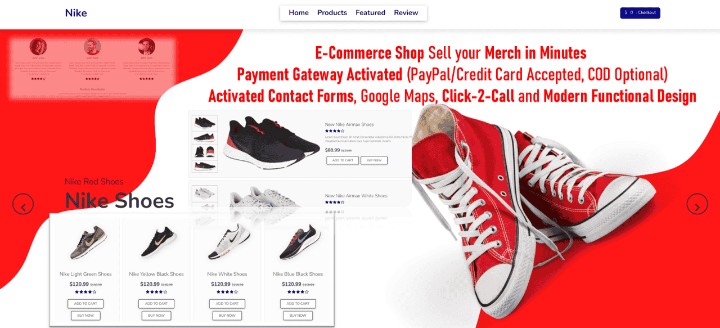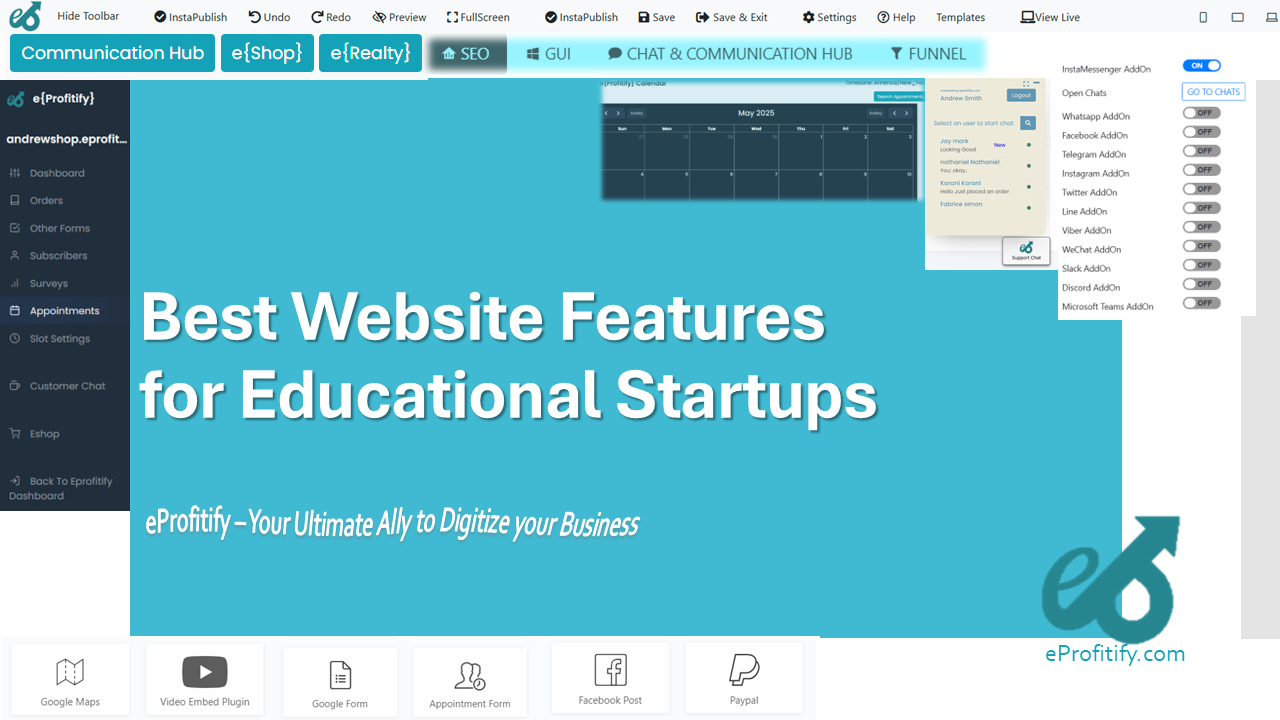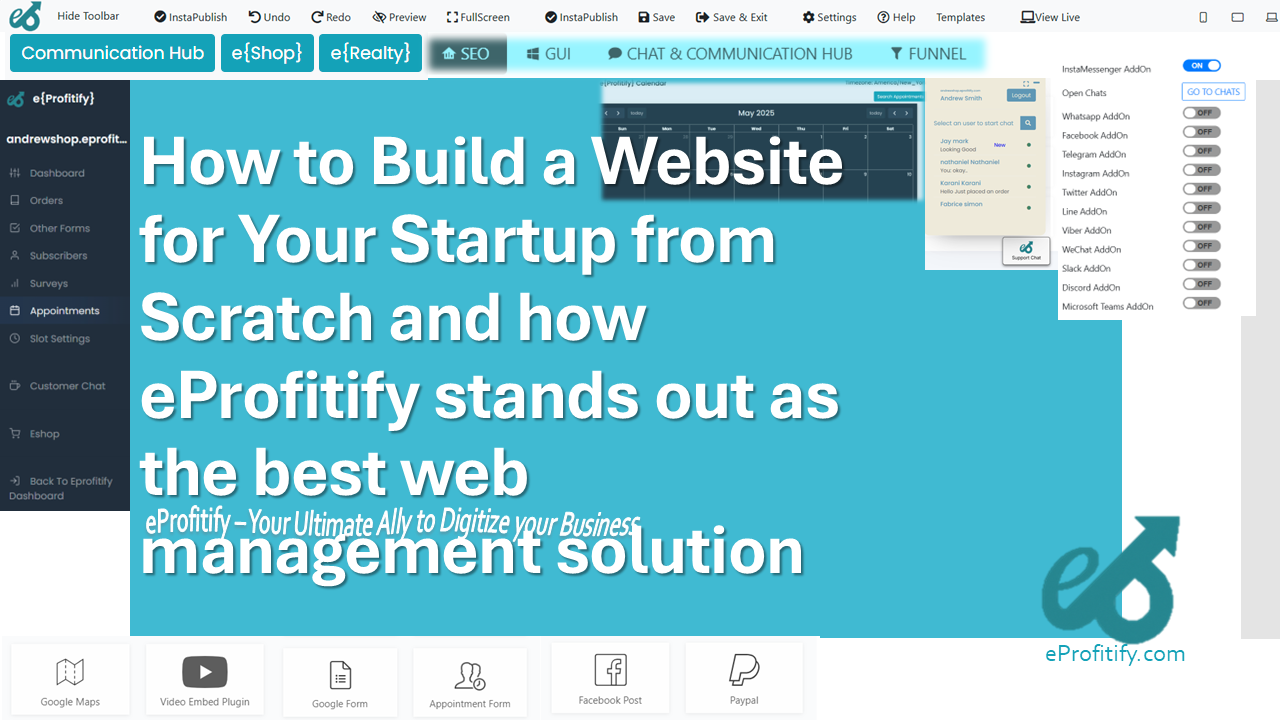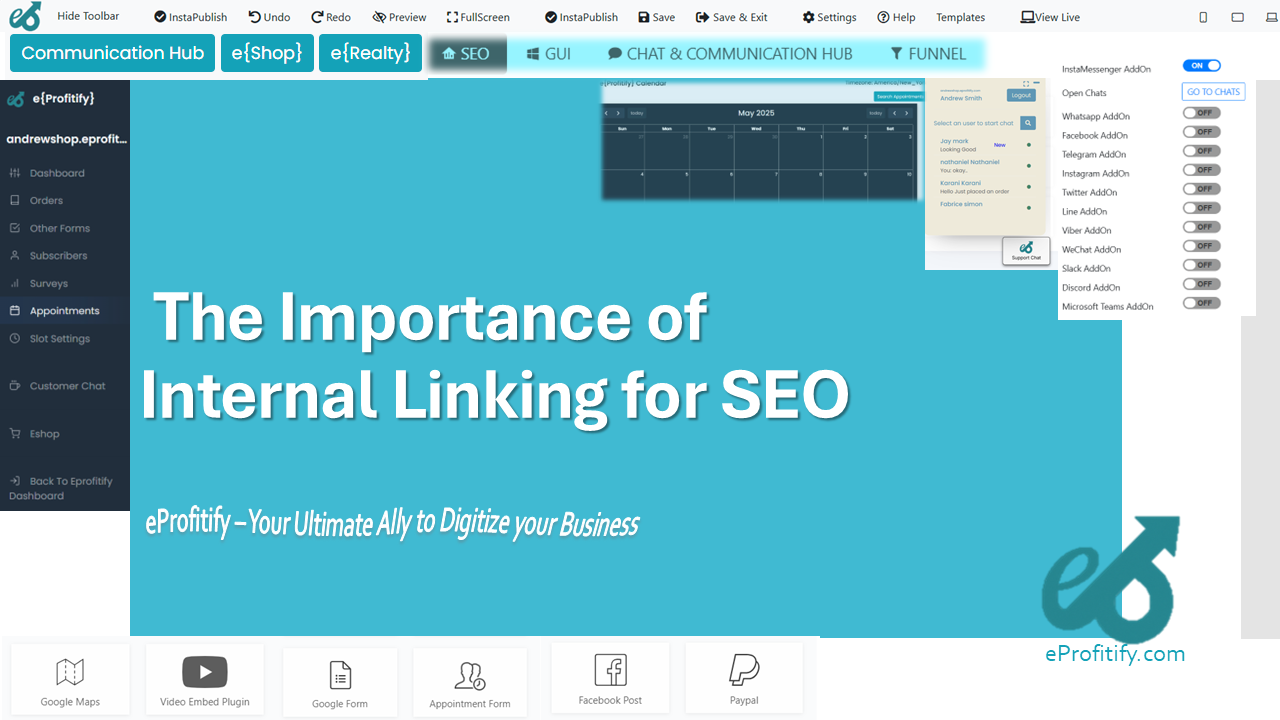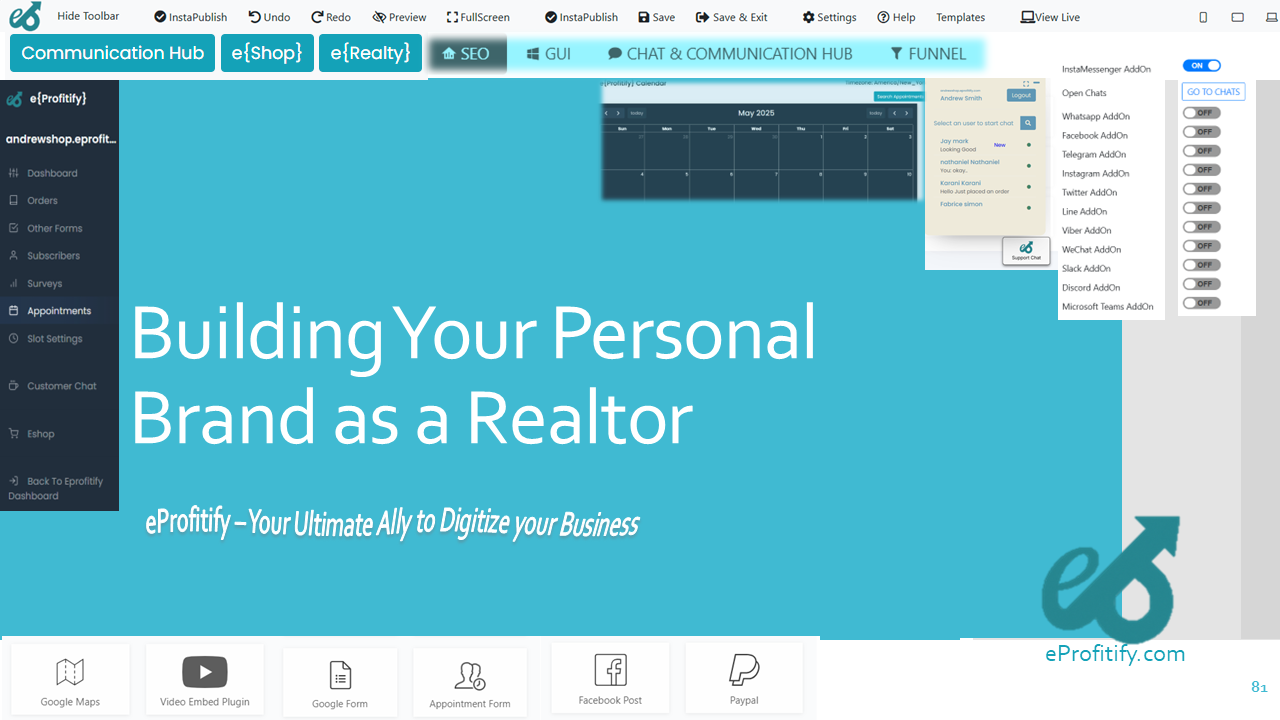Creating Localized Content to Attract Regional Clients
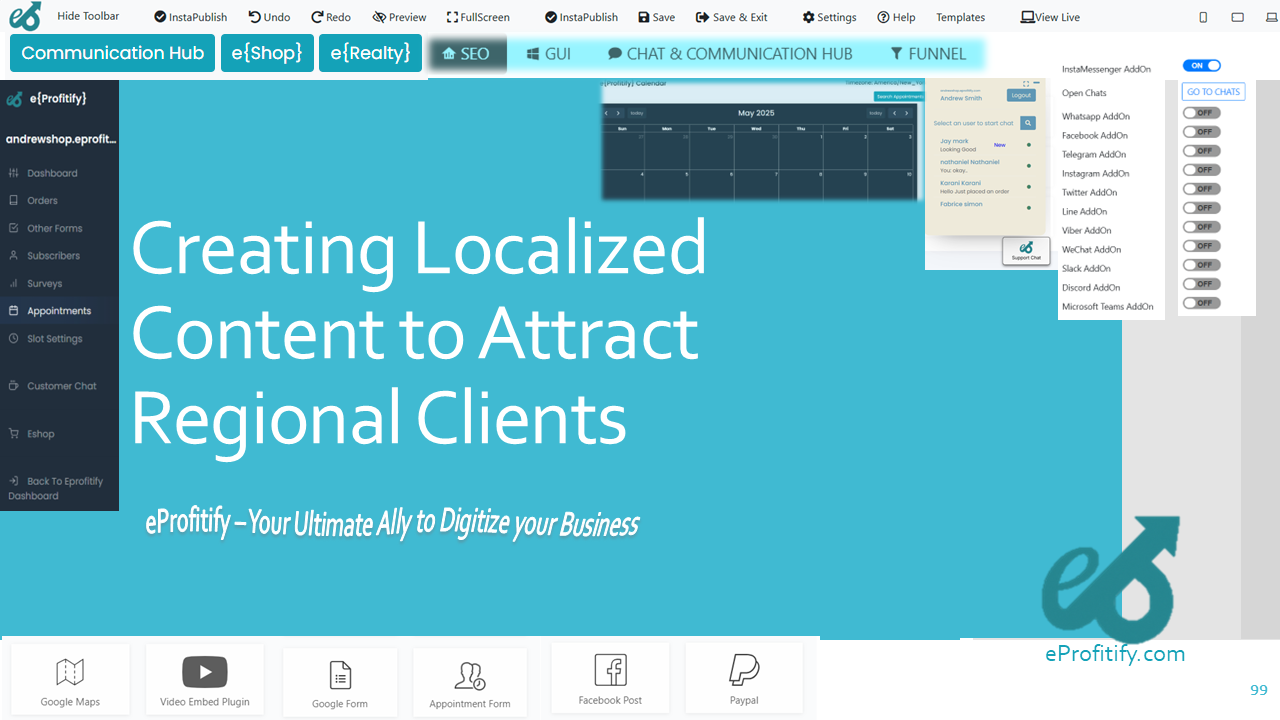
Schedule a LIVE Zoom call with an eProfitify Expert.
Creating Localized Content to Attract Regional Clients: Strategies, Statistics, and Tools like eProfitify
Introduction
In today’s interconnected world, businesses are no longer confined by geographical boundaries. However, while globalization opens doors to diverse markets, success hinges on a brand’s ability to resonate with local audiences. Localized content—tailoring messaging, language, and cultural nuances to specific regions—is no longer optional; it’s a necessity. Studies show that 76% of consumers prefer purchasing products with information in their native language, and 40% will never buy from websites in other languages. This article explores the importance of localized content, actionable strategies to implement it, and how tools like eProfitify empower businesses to streamline localization while enhancing customer engagement.
The Importance of Localized Content
-
Language Preferences Drive Purchasing Decisions
According to CSA Research, 72.1% of global consumers spend most of their time on websites in their own language. Localization goes beyond translation—it ensures idiomatic expressions, humor, and context align with regional sensibilities. For example, Coca-Cola’s “Share a Coke” campaign swapped names on bottles to reflect popular monikers in each country, boosting sales by 7% in Australia alone. -
Cultural Relevance Strengthens Connections
Cultural missteps can alienate audiences. Kentucky Fried Chicken’s infamous “Finger-lickin’ good” slogan was mistranslated in China as “Eat your fingers off,” highlighting the need for cultural adaptation. Conversely, Netflix’s localized content strategy, which includes regional shows and subtitles, helped it gain 60% of its 260 million subscribers from outside the U.S. -
Local SEO Boosts Visibility
Google processes over 1.2 trillion searches annually, many with local intent. Searches for “near me” have grown 150% YoY, and 46% of searches seek local information. Businesses optimizing for local keywords (e.g., “best coffee shop in Madrid”) rank higher regionally, driving foot traffic and online conversions. -
Trust and Loyalty Through Personalization
A Salesforce study found that 66% of customers expect companies to understand their needs. Localization builds trust by addressing regional pain points. For instance, offering payment methods like Alipay in China or UPI in India reduces friction.
5 Steps to Create Effective Localized Content
-
Research Regional Demographics and Behaviors
Use tools like Google Analytics to identify regional traffic patterns. Survey local customers to uncover preferences. For example, Japan’s preference for formal communication versus Australia’s casual tone. -
Adapt Content Strategically
- Language: Partner with native translators. Avoid slang that doesn’t translate.
- Imagery: Reflect local festivals, attire, and landmarks. McDonald’s India features vegetarian menus in ads to align with dietary habits.
- Currency/Units: Display prices in local currency and measurements (miles vs. kilometers).
-
Optimize for Local SEO
- Include region-specific keywords (e.g., “organic skincare Berlin”).
- Create Google My Business listings and localized landing pages.
- Build backlinks from local directories and influencers.
-
Leverage Local Social Media Channels
Platforms vary by region: WeChat dominates in China, while WhatsApp reigns in Latin America. Sprout Social reports localized campaigns see 2–3x higher engagement. -
Provide Localized Customer Support
Offer multilingual support and regional contact numbers. A Zendesk study found 50% of customers switch brands after one poor support experience.
Leveraging eProfitify for Seamless Localization
While localization demands careful planning, tools like eProfitify simplify execution. As a leading website publishing and management platform, eProfitify offers integrated solutions to engage regional audiences:
-
Multilingual CMS
Publish content in multiple languages with a user-friendly interface. Automatic translation plugins and SEO tools ensure localized pages rank higher. -
CRM with Regional Insights
Track customer behavior by region to tailor marketing strategies. Segment audiences based on location, language, and purchase history. -
Instant Messaging & Chatbots
Offer real-time support in local languages via AI chatbots, improving response times and satisfaction. -
Appointment Management
Automate bookings with timezone-aware scheduling, ideal for global teams and clients. -
Localized Ecommerce Tools
- Accept regional payment gateways (e.g., Klarna in Europe, Paytm in India).
- Display dynamic pricing and tax calculations.
-
Integrated SEO Analytics
Monitor local keyword performance and optimize content with data-driven insights.
Case Study Example: A European fashion retailer used eProfitify to launch localized campaigns in Southeast Asia. By integrating Bahasa Indonesian translations, region-specific product recommendations, and Instagram-optimized visuals, they saw a 45% increase in regional sales within six months.
Conclusion
Localized content is a powerful tool to build trust, drive conversions, and foster loyalty in regional markets. With 72.4% of consumers stating they’d likely repurchase from brands offering personalized experiences, the ROI is undeniable. Platforms like eProfitify streamline the complexity of localization, enabling businesses to manage multilingual content, optimize local SEO, and deliver tailored customer experiences—all from one dashboard. In an era where 88% of marketers cite localization as key to success, adopting these strategies (and the right tools) is no longer optional—it’s essential for growth.
By embracing cultural nuance and leveraging technology, businesses can transcend borders while feeling local, one region at a time.


